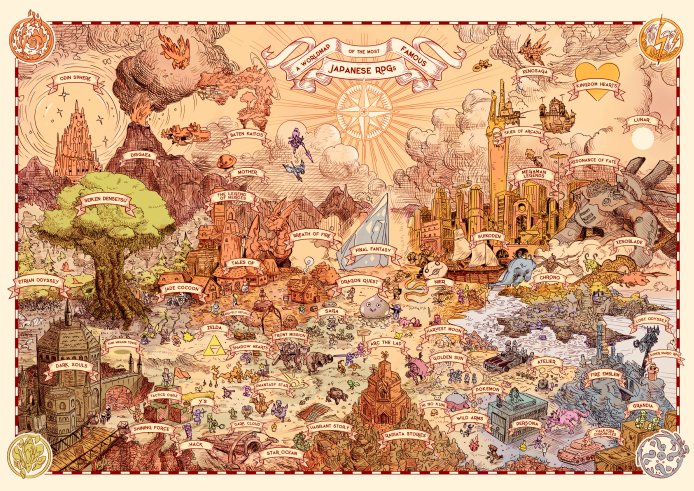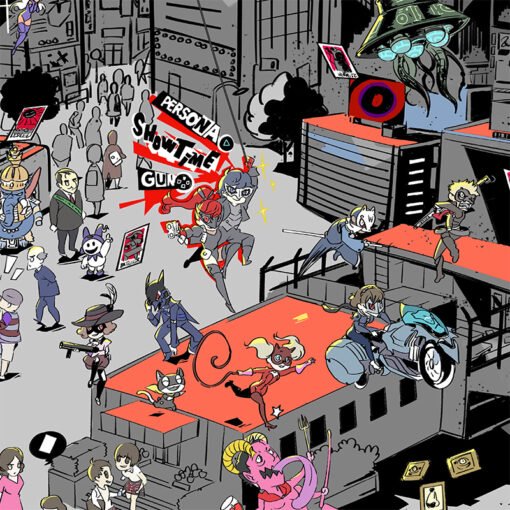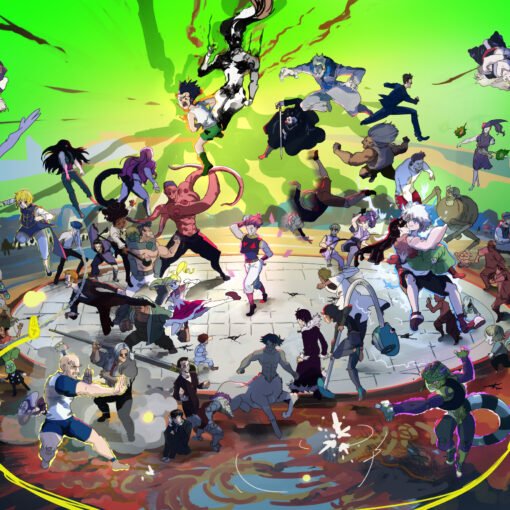
Nothing beats JRPG, Japanese role-playing games if you are looking for a change of scenery and a sense of wonder. With the controller in hand, one was projected into worlds created by the true artisans of this nascent industry, minds so original and free from any mercantile reasoning. In this golden age of RPGs, a subtle balance positioned the game, images, texts and sounds in a place where the player’s imagination was not paralyzed. We are talking about the first Final Fantasy, the Chrono Trigger of the old days or the more obscure Xenogears. Basically, the limited means and the codes of representation specific to the J-RPGs of this golden age put some distance between the player and the virtual world, and even if this prevents total immersion, it is a safe distance that allows him to act as much as to think. An RPG can thus be seen as a book where you are the hero, through which you follow and live a story by yourself.
TO FIND IN THE MAP
- Sora (Kingdom hearts)
- Ifreet (Final Fantasy)
- Odin (Odin Sphere)
- Lenneth (Valkyrie Profile)
- Malboro (Final Fantasy)
- Gwendolyn (Odin Shere)
- 2B et 9S (Nier)
- Behemot (Final Fantasy)
- Bombo (Final Fantasy)
- Chrono (Chrono Trigger)
- Tina (Final Fantasy)
- Majora’s Mask (Zelda)
- Flamy (Legend of Mana)
- Xenogears
- Cloud (Final Fantasy)
- Chocobo (Final Fantasy)
- Nina (Breath of Fire)
- Justin (Grandia)
- Bibi (Final Fantasy)
- Torneko (Dragon Quest)
- Ashley (Vagrant Story)
- Highwind (Final Fantasy)
VOYAGE
Ah, the long hours of wandering through the sumptuous landscapes that RPGs offer us. A huge expanse of clouds, a tree that pierces the sky and continents floating in the sky, everything is there to transport us outside the ordinary world. And how real they looked when you can move freely in them with your little virtual avatar! I wanted to represent this diversity in this Worldmap by modifying the scales of the different structures in relation to the little characters, by arranging them like a world map to be able to see everything at a glance.
QUEST
The quest is the obligatory pretext to make us lose hours in this imaginary world. No matter the nature of the quest, it leads us to encounter a variety of characters, such as magicians, warriors, scholars, or rogues, and to battle fantastical creatures like dragons, slimes, and others. The Cartographer applied himself to draw all these archetypes and scatter them on the map.
ADVENTURERS
The player is the real adventurer in this case. He embodies a character transported into a fictional world and through his actions, his choices and his emotional involvement, the experience is multiplied tenfold. The world is in peril and the player can save it. Through all these aspects, RPGs have become the perfect marriage between manga/anime, a genre known for using a light tone in order to tell us about the deepest things, books (look at the massive script of Xenogears), movies and music. They are an ideal ground for the fertile games of the imagination. They allow one to escape from reality without being alienated by an overly imposing medium. One is not forced into the story as with a book that one can close to daydream and let the material sink in. Each of these works is an authentically personal experience because it takes place partly in the imagination of the player. The RPG Worldmap is a tribute to all the masterpieces from what I consider to be the golden age of JRPGs, which spans from the late 16-bit consoles to the Playstation 2 era, with a few more modern exceptions. The mass arrival of mediocre video games overshadows the few quality games in which you really have to invest time to enjoy the experience. The players’ attention span is now so short that they can only fall back on games with immediate gratification. Whatever happened to the poetry in our games?




